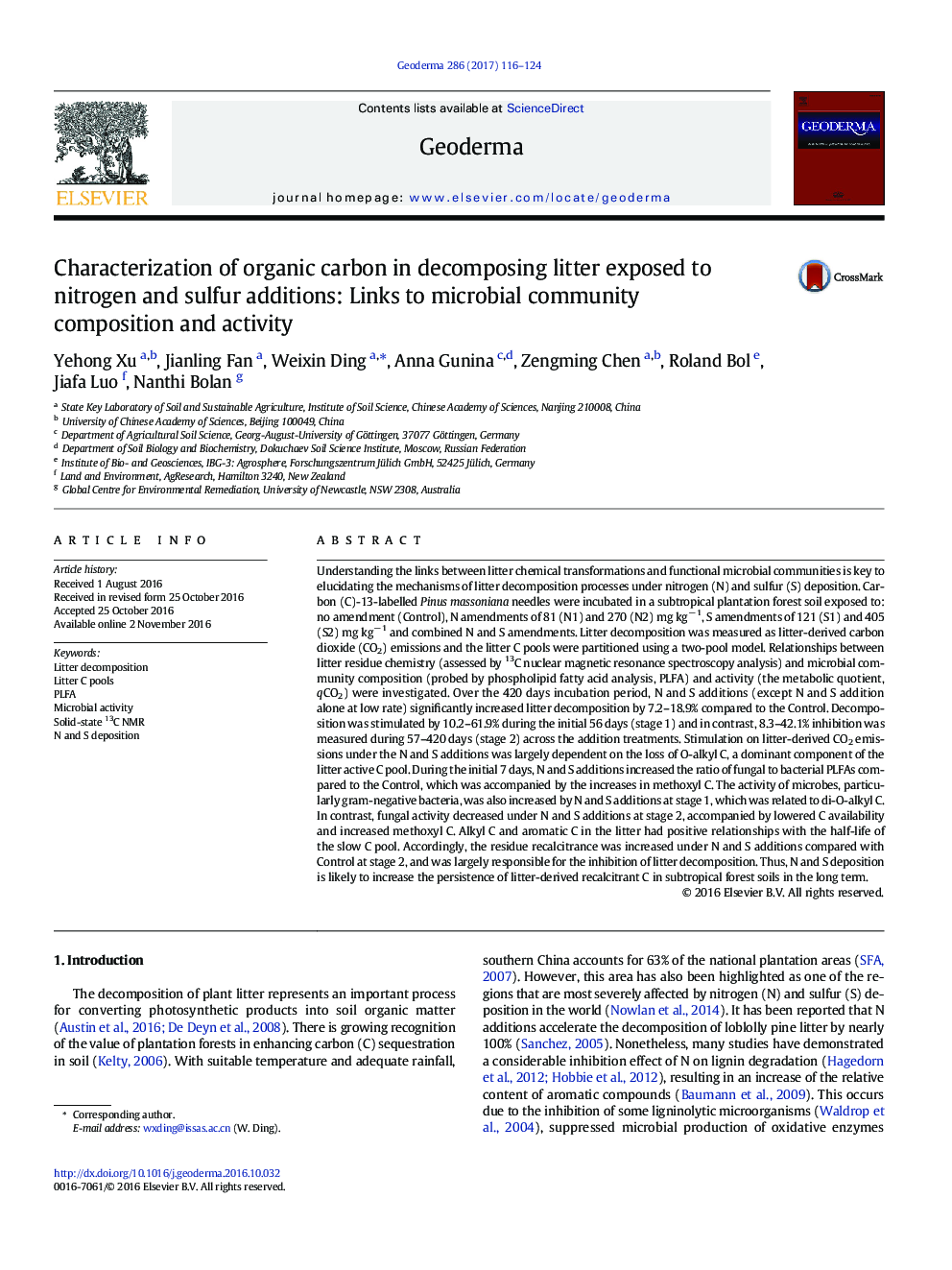| کد مقاله | کد نشریه | سال انتشار | مقاله انگلیسی | نسخه تمام متن |
|---|---|---|---|---|
| 4572822 | 1629431 | 2017 | 9 صفحه PDF | دانلود رایگان |
• O-alkyl C regulated initial N and S stimulation of litter decomposition.
• Later N and S inhibition of decomposition was due to increased residue recalcitrance.
• Microbial composition and activity were highly related to litter chemical changes.
• N and S treatments had similar litter decay rates but distinct chemical changes.
• N and S deposition facilitate C storage in subtropical plantation forest soils.
Understanding the links between litter chemical transformations and functional microbial communities is key to elucidating the mechanisms of litter decomposition processes under nitrogen (N) and sulfur (S) deposition. Carbon (C)-13-labelled Pinus massoniana needles were incubated in a subtropical plantation forest soil exposed to: no amendment (Control), N amendments of 81 (N1) and 270 (N2) mg kg− 1, S amendments of 121 (S1) and 405 (S2) mg kg− 1 and combined N and S amendments. Litter decomposition was measured as litter-derived carbon dioxide (CO2) emissions and the litter C pools were partitioned using a two-pool model. Relationships between litter residue chemistry (assessed by 13C nuclear magnetic resonance spectroscopy analysis) and microbial community composition (probed by phospholipid fatty acid analysis, PLFA) and activity (the metabolic quotient, qCO2) were investigated. Over the 420 days incubation period, N and S additions (except N and S addition alone at low rate) significantly increased litter decomposition by 7.2–18.9% compared to the Control. Decomposition was stimulated by 10.2–61.9% during the initial 56 days (stage 1) and in contrast, 8.3–42.1% inhibition was measured during 57–420 days (stage 2) across the addition treatments. Stimulation on litter-derived CO2 emissions under the N and S additions was largely dependent on the loss of O-alkyl C, a dominant component of the litter active C pool. During the initial 7 days, N and S additions increased the ratio of fungal to bacterial PLFAs compared to the Control, which was accompanied by the increases in methoxyl C. The activity of microbes, particularly gram-negative bacteria, was also increased by N and S additions at stage 1, which was related to di-O-alkyl C. In contrast, fungal activity decreased under N and S additions at stage 2, accompanied by lowered C availability and increased methoxyl C. Alkyl C and aromatic C in the litter had positive relationships with the half-life of the slow C pool. Accordingly, the residue recalcitrance was increased under N and S additions compared with Control at stage 2, and was largely responsible for the inhibition of litter decomposition. Thus, N and S deposition is likely to increase the persistence of litter-derived recalcitrant C in subtropical forest soils in the long term.
Journal: Geoderma - Volume 286, 15 January 2017, Pages 116–124
